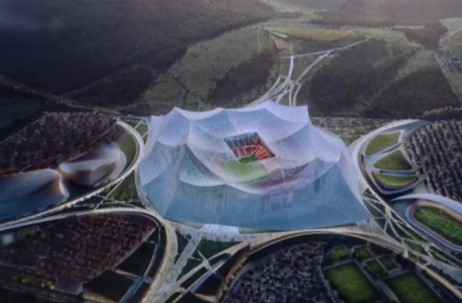On July 3, 2024, Morocco’s Interior Minister Abdelouafi Laftit and the President of the Royal Moroccan Football Federation, Fouzi Lekjaa, visited Casablanca to review the preparations for the co-hosting of the 2030 World Cup. During this visit, the first image of the future Grand Stade Hassan II was revealed, a pivotal element in Morocco’s bid. The meeting, held in the presence of key project stakeholders, was covered by the national broadcaster 2M.
A stadium rooted in Moroccan culture
Designed by the renowned architecture firm Populous, the Grand Stade Hassan II draws inspiration from the moussem, a traditional Moroccan gathering. The stadium’s design resembles a grand tent, harmoniously blending with the surrounding landscape. Populous describes the project as “deeply rooted in Moroccan culture,” merging traditional elements with contemporary expressions. The stadium’s design integrates features such as the moussem, the tent, gardens, and Morocco’s diverse topography and landscapes.
An open and welcoming space
The stadium aims to be a generous and open space that respects nature and embodies Moroccan hospitality. It will not only serve as a sporting venue but also as a symbol of the nation’s cultural heritage and modernity.
Infrastructure enhancements
To ensure seamless access to the stadium, the Moroccan National Railways Office (ONCF) plans to construct a nearby high-speed train (TGV) station. Additionally, the Casablanca-Settat Region is set to invest 5.1 billion dirhams (MMDH) in improving road connections and access routes. These developments underscore the region’s commitment to supporting the successful co-hosting of the 2030 World Cup.





